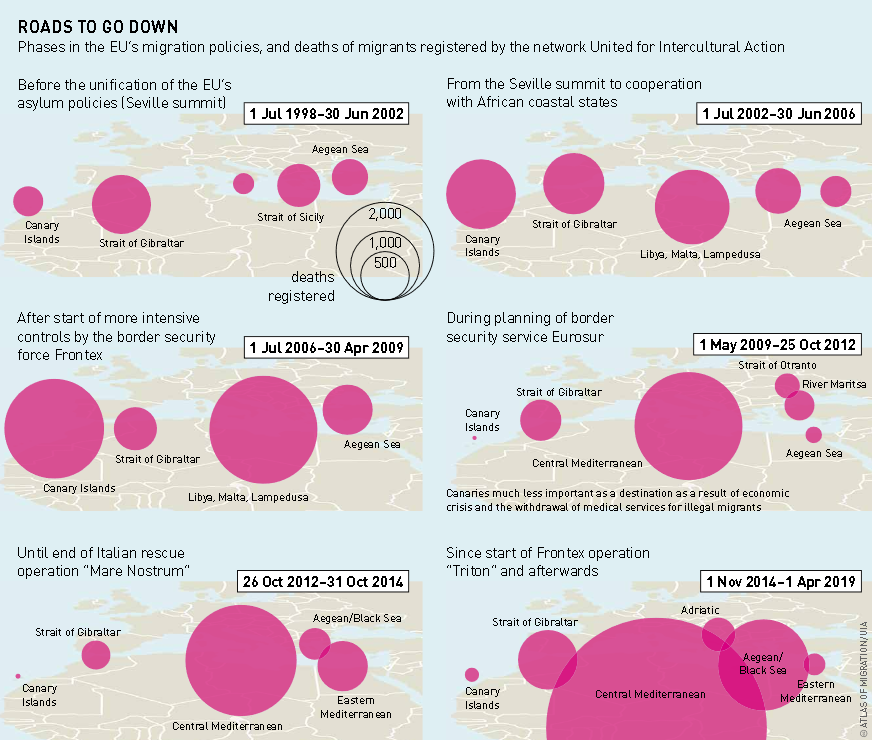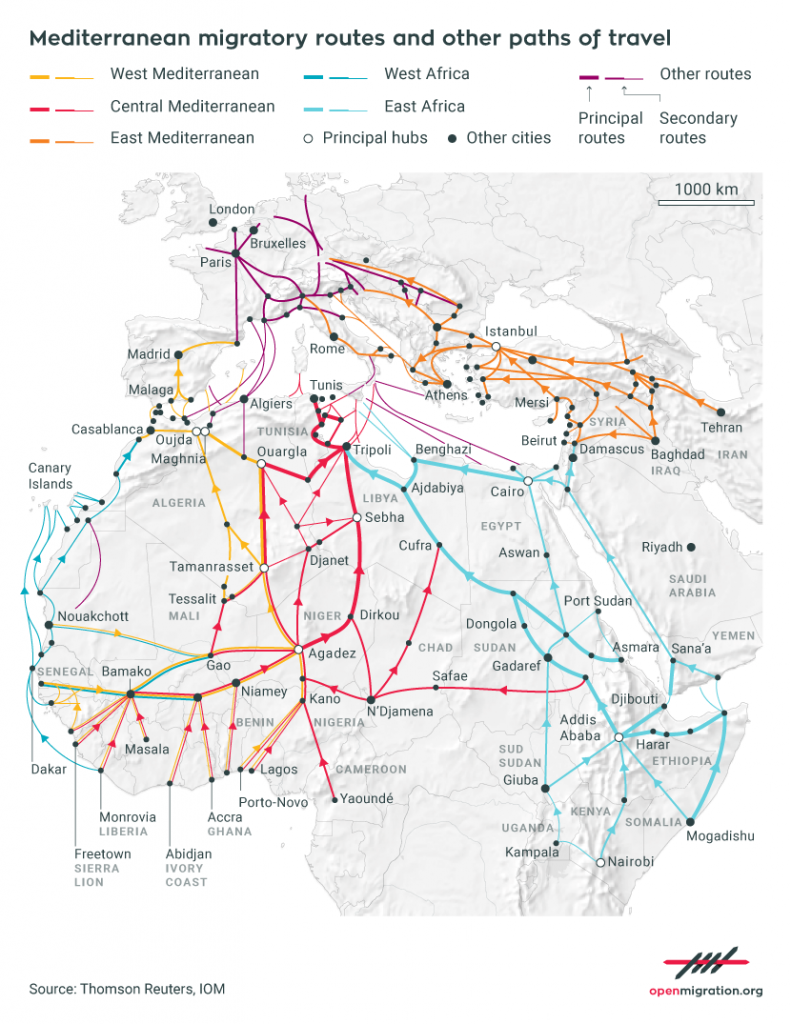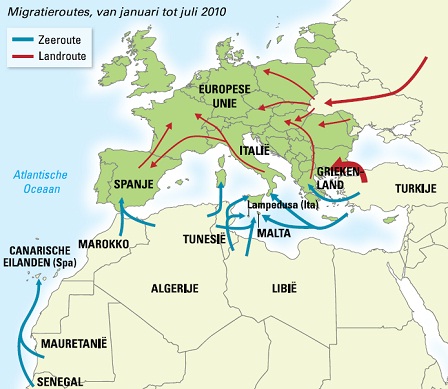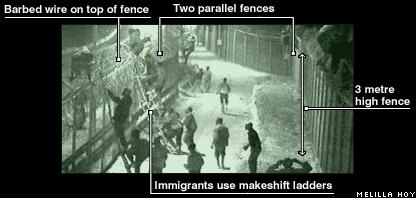Facts and figures about people on the move
ROSA LUXEMBURG STIFTUNG
Migration: a contested human right
Migration is not a social outlier. Every modern society and every state in the world is also a result of human mobility. The migration issue nevertheless sparks heated political debates around the globe, while opinion formation among citizens, politicians, political parties, and movements often occurs along the axes of the migration question and policies of dealing with it. The myths and images that have emerged around the social phenomenon of migration are correspondingly powerful. Among the best-known linguistic and visual representations of migration are those of streams, waves, and floods. They make migration appear threatening and render the actual migrants invisible.

The Atlas of Migration seeks to change perspectives on migration and its actors, initiate a political shift, and contribute to a more objective debate within left-wing European parties and movements. Here opinions range from the open-borders paradigm to negative attitudes towards migrants, often based on the assumption that they compete with the particularly vulnerable in European societies. The figures and facts collected show that, although migration takes place in all parts of the world, it poses no threat to the social fabric of the countries of neither destination nor origin.
Migration is a threat, however, for the migrants themselves—especially for fugitives and undocumented migrants. This is made clear by the chapters on border deaths and deadly border controls. Everyday racism and racist terror, but also institutional and political xenophobia, make travel more difficult for migrants and refugees, threatening their participation or even their lives in the countries of destination—and thus their human right to migration.
Migrants nevertheless take their fate into their own hands. This is demonstrated by the chapters on migration struggles—against racism and for the rights of immigrants and refugees. Together with non-migrants, countless solidarity movements against deportations, xenophobia, and right-wing populism as well as for the right to social participation, decent work, adequate housing, education, and health care have emerged in Europe and the world. They contribute to making the society of the many a reality.
Migration has many realities and facets. This atlas promotes a differentiated approach to migration. In the current social climate, it takes courage to address this issue calmly and to recognize that immigration pluralizes our societies in the democratic sense.


